The Republic of Korea’s War Service Medal 대한민국의 전쟁종군기장
or more precisely
The Republic of Korea’s “6.25 Incident Participation Medal “대한민국의 6.25 사변종군기장
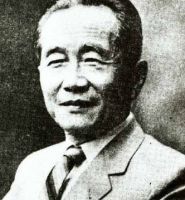
I have been collecting Korean Orders, Medals, and Decorations since 1993, and it has been my experience that the majority of the information available on the subject is either incomplete or in some cases completely erroneous. The 6.25 Incident Participation medal issued by the Republic of Korea is no exception. Take for example the information on www.wikipedia.com. On three separate occasions, I tried to correct the errors on their Korean War Service Medal page, but to no avail. Each time, someone has returned it to the original misinformation.
An equally important reason for me to put this page together is my interest in helping veterans and collectors to recognize the authentic medals from the more spurious reproductions.
The Korean Government’s original offer for the KWSM
On Nov. 15, 1951, Yi Ki-poong 이기붕 (1896-1960), the Minister of Defense for the Republic of Korea, offered the ROKWSM to the Commander in Chief of the United Nations Command. Pictured below are the three pages of that letter as kept by the U.S. National Archives and Records Administration (NARA).1
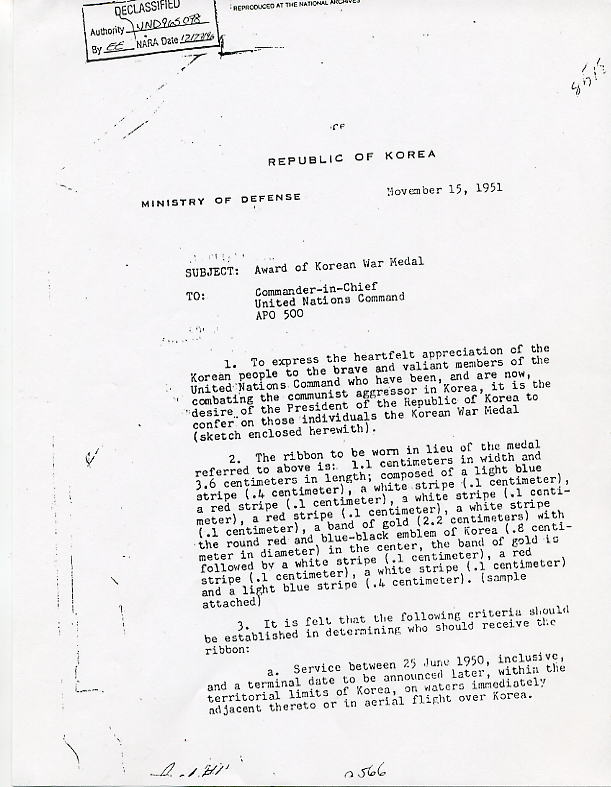
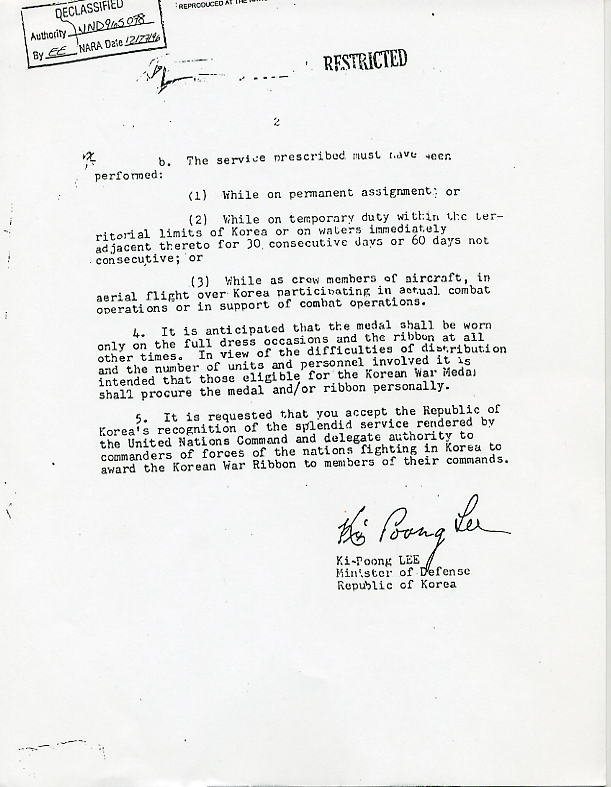
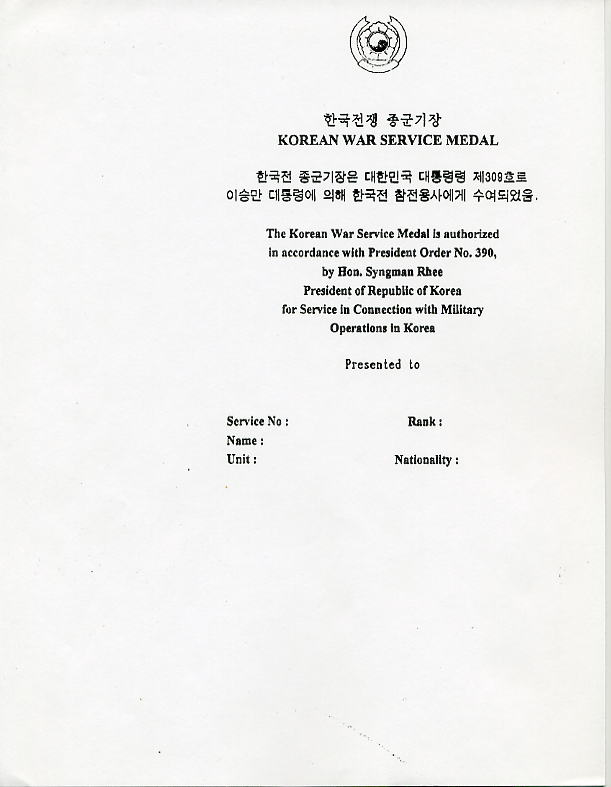

This letter is widely quoted on the internet, but I have yet to find a website which shows the letter. Even though there are several problems with this letter, I present it here because I want to show the full history of the medal and all the recovered documents that have come to light so far. Both copies of this letter, that were discovered in NARA, did not contain renderings of the medal, ribbon, or ribbon bar that are referenced on page one. It does, however, give dimensions for the ribbon and ribbon bar. Even without the drawings, on the third page, it gives a proposal for the Award document. This proposed document states in English, “The Korean War Service Medal is authorized in accordance with President Order No. 390, by Hon. Syngman Rhee, President of the Republic of Korea for Service in Connection with Military Operations in Korea.” (Presidential Decree #390 is covered in the next section of this webpage.) Another issue with this letter is on the third page. In the Korean text, it refers to Presidential Decree as #309. This is a typo. Presidential Decree #309 has nothing to do with medals, and in fact, it was promulgated on March 31, 1950, almost three months before the Korea War started.
Presidential Decree #390
Here is a photocopy of the original Presidential Order No. 390, as it is recorded in the Korean government’s legal registry (Kwan Bo). This clearly shows the medal that Yi Ki-poong and the Korean government originally offered to all Korean War Veterans. This document is written in a mixture of Chinese and Korean characters. I have highlighted three lines from this document. Reading from right to left, they are: 檀紀四千二百八十三年十月二十四日 (단기사천이백팔십삼년십월이십사일), which is the old Korean Calendar date for October 24, 1950, 大統領令第390號 (대통령령제 390 호) Presidential Decree #390, and, 六.二五事變從軍記章令 (6.25사변종군기장령) which translates as 6.25 Incident Participation Medal Decree. (If you look at Yi Ki-poong’s letter above, this is often translated as Korean War Service Medal, but technically, it is the 6.25 Incident Participation Medal.) Another thing that you might note, is the fact that the Taeguk symbol is on the ribbon bar and not on the suspension ribbon/drape. If you compare the dimensions given in Yi Ki-Poong’s letter above, to the dimensions in this document and to the document in the next section, you will find that they are identical.
You can get an original copy of this document by clicking here on the Korean Official Gazette 관보 Kwan Bo. Be sure to go to the bottom of the page and select the 5th page from the left. If you want to get a copy in Korean without the drawings, you can click here on The Korean Law website. Unfortunately, I have not found a website with the entire document in English.
For the skeptics amongst us, I ask that you make a copy of the Kwan Bo document and make a copy of the Korean Law Document from the paragraph above. Because parts of the Kwan Bo document are in Chinese Characters, I ask that you take these items to any older Korean and he/she should be able to confirm that they are one and the same.
Korean War Service Medal – Type 1
Now for the fascinating part. I have seen several websites and more than a few books which show drawings of the medal originally authorized under Presidential Decree #390, but state that it was never issued. The truth is that the medal was issued to Korean War Veterans, but in extremely limited quantities. Having scoured the world for the last 20+ years, I have been able to acquire two examples. The one medal, below on the left, is probably an original. The text on the reverse is in English and that causes some concern because there is nothing in the Korean legal statute which allows for this. The medal pictured below on the right is parade mounted and has nothing on the reverse. This is most likely a reproduction because the outline of the Korean peninsula in the center is backwards, which is something that the Koreans would never do, or accept. It was probably manufactured outside of Korea, and several sources indicate that there were reproductions done in Japan.
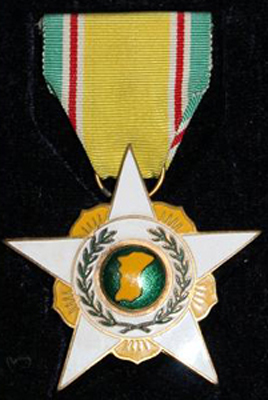

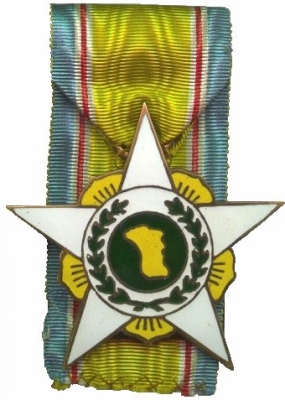
European Style Parade Mount
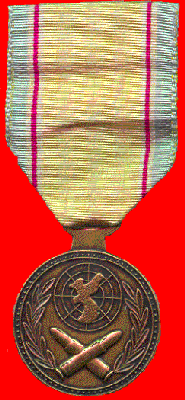
Korean War Service Medal – Type 2
At some point in time, the Korean government must have realized that they could not afford to manufacture a million or more of the enameled Type 1 Korean War Service Medal. They may also have been influenced by the fact that service medals are rarely done in enamels. The medal pictured on the left is an original Korean War issue. On the right, I have digitally enhanced/lightened a picture of the reverse. The line down the center says, “6.25 Incident Participation Medal”. The rocker across the bottom says: “Republic of Korea”. Most of the Korean War Service medals, issued by the Korean government, were manufactured by a company called Jung Il Sa. According to Mr. Chang Hui-kwan, the son of the original owner, they have produced this medal with both a dark and a light planchet. Since these are legitimate pieces, I refer to the darker pieces as Type 2 and the lighter planchets as Type 2A.
The address for Jung Il Sa is Kwan Su Dong 130-2, Jong Ro Gu, Seoul City, Seoul, Korea 110-420. If you decide to visit Jung Il Sa, you will need to bring an interpreter.
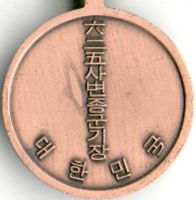
1954 Korean Award Document
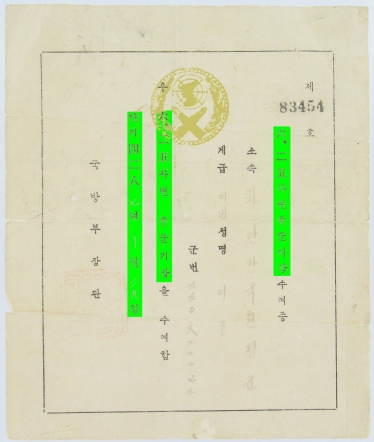
Presented here is an award document for the 6.25 Incident Participation Medal. The handwriting is extremely faded. I have highlighted three lines of text on this document. Reading from right to left:
- The first two lines are identical, namely: 6.25 사변종군기장, which translates as “6.25 Incident Participation Medal”
- The third line is the date 단기 4287.10.29. This is the old Korean Calendar date for October 29, 1954
I want to show this document for several reasons:
- It clearly shows that the planchet’s design has changed, but the title for the medal has not, and,
- There are several websites which state that the name of the Medal was changed in 1954. The only Korean Legislation issued in 1954 for this medal was Presidential Decree #892 which was issued on April 14, 1954, over 6 months before the issuance of this document, and because,
- The term “Presidential Decree #390” is missing from the document, clearly indicating that this was at the time the correct award document for this medal.
Korean War Service Medal – Type 3
Hundreds of thousands of medals with the “Crossed Bullets” design were issued during the Korean War. A check of the Korean Government Legal Registry shows that the design change was not authorized until April 14, 1954, when Presidential Decree #892 was issued. For those websites and individuals who think that the name of the 6.25 Incident Participation Medal was officially changed to the “Korean War Service Medal”, one only needs to compare the titles on the: 1950, 1954 and the 1970 pieces of legislation. The title is the same on all three Presidential Decrees (#390, #892 and #4930).
The change in terminology is due to a misunderstanding of the medals and boxes that were issued for the 50th Anniversary of the Korean War. The cover on the box clearly says 6.25 전쟁종군기장 which translates as “6.25 War Service Medal”, and it agrees with the English text below it. But if you pull the medal out of the box and look at the reverse of the planchet, you will find it inscribed as: 6.25사변종군기장 (6.25 Incident Participation Medal). These medals were produced with the original dies by the company of Jung Il Sa. The same company that produced the Type 2 and 2As.
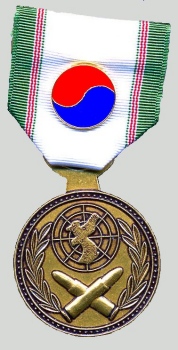
Korean War Service Medal – Types 4 & 5
There are numerous reproductions of the crossed bullet’s medal on the market. Some of which have some glaring differences from the legitimate medals. Some of these differences include: a Taeguk symbol on the drape, the Taeguk symbol upside down (red is always superior to blue), and/or a reverse printed in English. These I generally refer to as Type 4. Pictured here to the left is probably the worst example of a reproduction medal that I have seen. The planchet is mounted on the Korean Presidential Commendation Ribbon, with a Taeguk symbol pinned to the drape. These are so far out in left field, that I refer to them as Type 5.
TIOH – Korean War Service Medal
The United States Army Institute of Heraldry, also known as The Institute of Heraldry (TIOH) is a Department of the Army that furnishes heraldic services to all the U. S. Armed Forces, NASA, and U. S. government organizations including the Executive Office of the President. They are tasked with the development, standardization, quality control, and approval of all symbolic items, such as unit insignia, badges, and awards. In 1996, due to the pressure being exerted by Korean War Veterans who were demanding the approval of the Korean War Service Medal, the Institute of Heraldry placed a contract with Ira Green, Inc., to manufacture full-size samples of the Medal. Pictured to the right is one piece of that original TIOH sample run. When the Korean Government agreed to furnish the 50th Anniversary Medals to all Korean War Veterans, there was no further need for TIOH to continue the project. Ira Green sold the few samples that were on hand. Some of these medals may also have been sold through, H. J. Saunders U. S. Military Insignia, Inc. The reverse inscription reads “Korean War Commemorative Medal 1950-1953©”
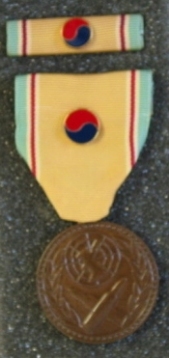
Purported Korean War Document
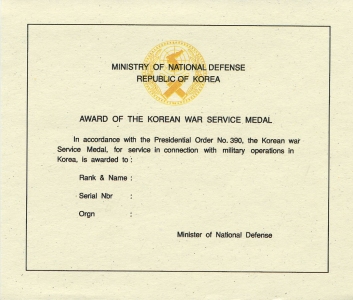
Pictured at the left is a very poor reproduction of the original award document offered by Yi Ki-poong. Notice that all of the Korean text and much of the English text is missing. In addition, the document mentions Presidential Decree #390, but shows the crossed bullets’ version of the planchet. Reproduction documents, like this, only help to confuse the true history of this medal.
DMZ veterans who came under fire after the Korean War Armistice was signed on July 27, 1953, are not eligible for the South Korean War Service Medal. More than 500 South Korean soldiers and 50 Americans have been killed along the DMZ since the end of the war. The high point of the tension along the DMZ occurred between 1966 and 1969. During this period: 397 North Koreans, 299 South Koreans and 43 Americans were killed in what is called a low-intensity conflict.
Recent History
Les LeCompte, an Army military policeman who spent the winter of 1951 and 1952 in central Korea, said he first learned of the Korean War Service Medal from a brief mention of it in the 1993 book, “Honors, Medals and Awards of the Korean War;” by Kevin Ingraham. Mr. LeCompte and other Korean War veterans began digging for more information about the medal, but initially, they had little success. Veterans who inquired at the Army awards branch were told that “a search of our historical files … failed to show that this award was ever formally presented to the U.S. government by the Republic of Korea.;” Questionnaires sent to U.S. Veterans showed that “no one had heard of it;”. At the dedication of the Korean War Memorial on July 27, 1995, U.S. veterans noticed their counterparts from other nations were wearing the medal or the miniature pin. Veterans started searching for the original documentation on the ROKWSM. In addition to searching Defense Department records, Mr. LeCompte searched State Department files. There he found “letters from wives and veterans wanting to know if they could get their medals.;” He turned up veterans’ pleas to then-Sen. Lyndon Johnson of Texas and others in Congress for help retrieving impounded awards. Tucked among the letters and award citations, on folded, tissue-thin paper, Les LeCompte discovered the letter outlining Yi Ki-poong’s 1951 proposal for awarding Korean War medals. Another copy was also discovered in a search of the records of the now-defunct Far East Command. Veteran groups started a series of letter writing campaigns, which eventually reached the Office of the Secretary of Defense.
On August 20, 1998, Francis M. Rush Jr., Principal Deputy Assistant Secretary of the Army, approved the acceptance and wearing of the Korean War Service Medal (KWSM). Also in 1998, the Korean government reaffirmed that its original offer of the ROKWSM was still valid, and provided the award criteria and the period of eligibility, namely:
- Served between the outbreak of hostilities, Jun. 25, 1950, and the date the armistice was signed, July 27, 1953
- Had been on permanent assignment or on temporary duty for 30 consecutive days or 60 non-consecutive days
- Performed his / her duty within the territorial limits of Korea, in the waters immediately adjacent thereto or in aerial flight over Korea participating in actual combat operations or supporting combat operations.
On Aug. 20, 1999, the Secretary of Defense approved the acceptance and wear of the medal. Because the order of precedence for non-U.S. service medals and ribbons is determined by date of approval, the ROKWSM should be worn after the Kuwait Liberation Medal (government of Kuwait). For the majority of Korean War veterans, the medal will be worn after the United Nations Medal or the Republic of Vietnam Campaign Medal if they served during the Vietnam War. In commemorating the 50th Anniversary of the Korean War, the Korean Government decided to produce 800,000 Korean War Service Medals, for distribution to the war veterans. The Koreans distributed 260,000 medals in 2000, 243,000 in 2001, and 202,000 in 2002. The remaining 95,000 medals were still available in 2003. Of the 800,000 medals, the Korean government agreed to furnish 450,000 ROK War Service Medals for U.S. Veterans, free of charge, and to supply another 50,000 medals if necessary. It was decided that the U.S. Air Force would be responsible for distributing the medals in the U.S. for all branches of the military service. By December 2002, the U.S. Air Force had processed 155,709 requests and mailed 144,227 medals. By Sept. 21, 2004, the U.S. Air Force had processed 176,443 requests and had mailed 168,057 medals. The program is now finished, and I have unfortunately not been able to get the final tally on the number of medals that were processed by the U.S. Air Force. The ROK-provided medal is the only medal approved by the U.S. government which meets the criteria for wear on the military uniform. The Korean company, Jung Il Sa, that originally manufactured the 6.25 Incident Participation Medal, also manufactured the 50th Anniversary Medals.
Acknowledgements
On a personal note, I owe a gigantic debt of gratitude to Mr. Les LeCompte and his fellow veterans. If it hadn’t been for all the hours that they poured into the research, much of this information would have remained buried in the U.S. National Archives and Record Administration. Sadly, Mr. LeCompte passed away on Jan. 23, 2017. I will never forget his kindness.
I also need to acknowledge the assistance of Ryu, Sun-hee and Kwon, Young-seup, both from the Orders and Medals Department of the Korean government and Suk Kyung-chang and the staff of the Circulating Division of the Korean National Assembly Library. If it had not been for their assistance, the Korean half of the story would have remained buried in Korea.
“Thank You” does not begin to express my gratitude.
One Final Note
Some food for thought. Long after the War ended, Korea was so deeply in debt, that it could not afford to manufacture and issue the medals that it had awarded to its own troops. The vast majority of Koreans only received their ribbon bars. If a Korean wanted his medals, he was forced to buy them directly from the manufacturers. In July 1956, the government published “Korean Report, Volume IV”, and it states on page 3, that during the past year, 92% of all award recipients only received the ribbon bar. The majority of the people who did receive their medals were foreigners.
